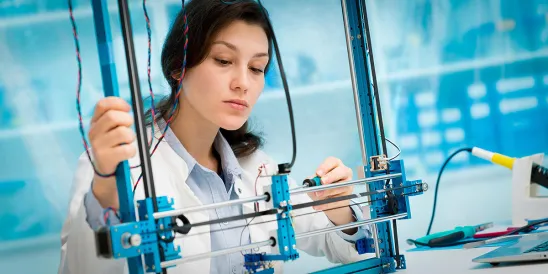The U.S. Food & Drug Administration (FDA) recently issued a discussion paper to gather feedback that will inform future policies and guidance regarding 3D printing medical devices at the point of care.
Amidst COVID-19 supply chain shortages, health care facilities began working with 3D printer manufacturers to print medical devices, e.g., face shields, face mask holders, nasopharyngeal swabs, and ventilator parts from locally-available materials directly at the point of care. FDA is considering how health care facilities, who are not traditional medical device manufacturers, should be regulated when making 3D printed devices. The FDA’s primary concerns regarding 3D printed devices at the point of care include:
-
Assuring that the devices are safe and effective;
-
Assuring the appropriate controls are place; and
-
Clarifying which entity is responsible for complying with the FDA’s regulatory requirements.
While the FDA has not proposed any guidance or policy yet, the discussion paper invites feedback on the following potential regulatory approaches for 3D printing medical devices at the point of care:
-
Continue employing a risk-based approach (factoring risks of the printed device itself and the risks of the 3D printing);
-
Maintain that device specification would not change based on the location of manufacture (whether manufacturing at a traditional facility or point of care “should not alter the manufacturer’s ability and obligation to ensure that a device meets its predetermined specifications”);
-
Factor in capabilities—such as oversight, training, and experience—already available at a health care facility to help mitigate production risks;
-
Clarify ambiguity around an entity’s responsibilities in the device’s total product life cycle; and
-
Leverage existing controls and adopt a “least burdensome approach” (for example, relying on existing standards and processes).
The FDA outlined three potential regulatory scenarios:
Scenario 1: The 3D printer manufacturer assumes the responsibilities of the FDA regulatory requirements and the health care facility assumes the role of the user.
Scenario 2: The health care facility develops a business relationship with a “Traditional Manufacturer” who would be located at or near the health care facility site and who would be responsible for FDA regulatory compliance.
Scenario 3: The health care facility assumes all Traditional Manufacturer responsibilities and is responsible for FDA regulatory compliance.
This discussion paper is a starting point for regulating 3D printed medical devices at the point of care, and FDA encourages stakeholders to submit comments under docket number FDA-2021-N-1272. The last day to submit comments is February 8, 2022.





 />i
/>i

